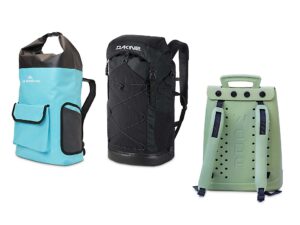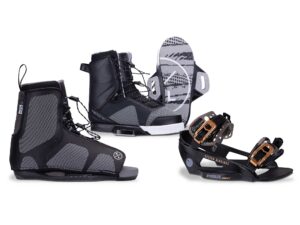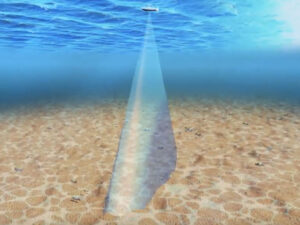The faster you go, the easier it is to thread the needle.” Yeah, okay. Maybe with your boat. I, however, was running a 60′ cruiser that belonged to someone else. I was testing it for review and publication when our course took us through a bridge over the Intracoastal Waterway with a 40′-wide opening, further constricted by a tug and barge moored side-to against the fenders. The test boat’s 20′ beam needed to be squeezed through a 25′ choke point. And the current was ripping from astern. Apparently the sea gods wanted me to have as much fun as possible.
The wisdom was right, however-going faster makes a powerboat easier to steer, but in this case, it also might have made it easier for the fiberglass repairman to retire early. So instead of throttling up, I energized the bow thruster. Then, using just enough diesel and reverse gear to control my drift – the current was 3 mph from astern – I headed for the slot. With the barge to port and the bridge abutment to starboard, a current-generated whirlpool grabbed the rudders and tossed the stern aside. I touched the joystick, straightened out, and slid through slicker than poop through a goose.
Squeezing through a narrow opening is just one of several ways, besides docking, a bow thruster proves valuable. If you’re one of the many – and I know you’re out there because I was one of you – who thinks that thrusters are for sissies who can’t run a boat, think again. Consider that Magellan and Columbus would have used internal combustion in the doldrums and for crossing reefs. Consider that Admiral Perry would have used a GPS if he had one. Consider that Admiral Nimitz would have been foolish not to install radar on navy ships in WWII. Consider that, unless you’re able and willing to take a star shot with a sextant from a pitching deck on a night with peek-a-boo clouds, you shouldn’t knock bow thrusters. They’re simply another tool at our disposal.
Are there tips, tricks, and unconventional uses for bow thrusters? Of course. These are mine. Please enjoy.
Don’t lean too hard. Electric thrusters are meant for intermittent use. Lean on the stick and you’ll put a big strain on your DC system and maybe even cook the thruster motor. Hydraulic thrusters are for continual use, but even so, use your thruster in bursts. You want to move the bow, not slam it into a piling. Control your approach. Let’s say you’re coming in for a side-to docking and there’s a stiff, onshore breeze-so stiff that laying off and drifting in would crunch your hull. Well, a bow thruster can save the lee side of your boat by slowing your drift-in approach.
Put the anchor where you want it. Ever have the bow fall off when you’re trying to set the hook? A bow thruster helps you settle the boat straight back against the rode.
In case of emergency, steer. In open water, you can control the direction of a twin-screw boat even if you lose steering (and the rudders aren’t locked hardover). The task is a bit dicier once you get inside the inlet or near other boats. A thruster, in conjunction with opposed engines, provides tight enough control to get you back to your marina, possibly even your slip.
Let’s go fishing. I know one Bahamian charter skipper who loves using his thruster to control his drift, particularly when he’s trying to parallel a weed line. No, thrusters aren’t quieter than engines (their props are pitched aggressively for maximum thrust so they cavitate), but it beats the wear and tear on starter motors and doesn’t engulf his crew in fumes. Besides, he’s running the genset anyway.
Well, there you have it: permission to install a bow thruster without fear of rebuke or reprisal from fellow boaters, and several out-of-the-ordinary uses for the thing once you’ve got it.









